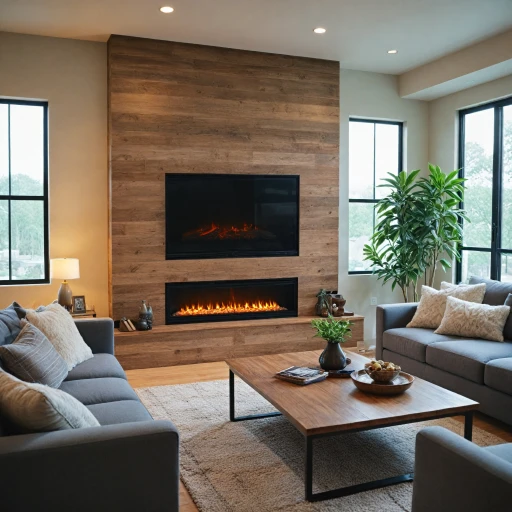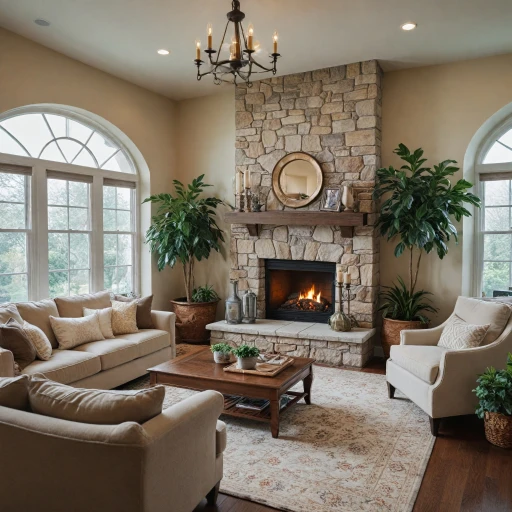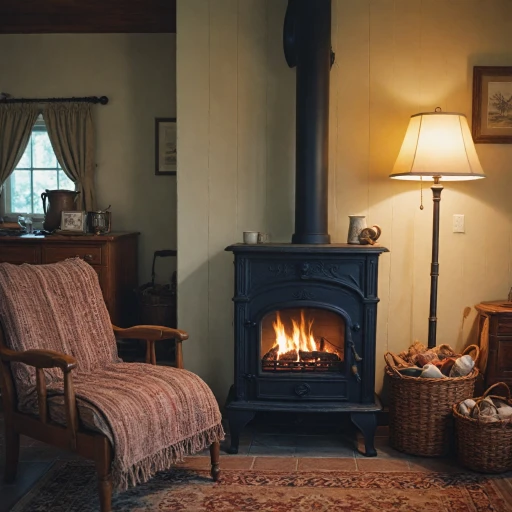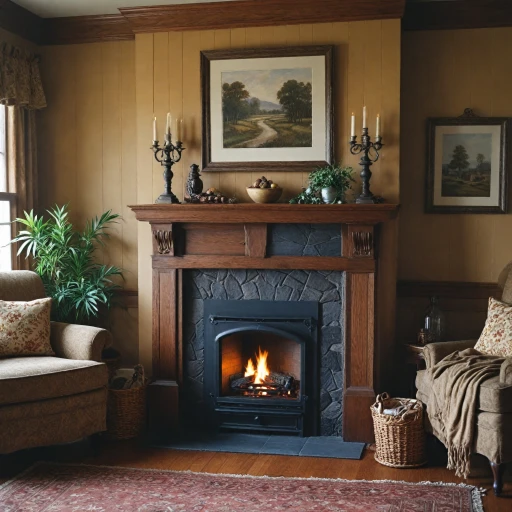
Comparing Gas and Electric Fireplaces
Examining the Pros and Cons
When it comes to adding warmth and ambiance to your home, electric and gas fireplaces each offer unique attributes. Let's take a look at what makes both options stand out, focusing on the cost and logistics to help you make an informed decision. Electric fireplaces are appreciated for their simplicity and safety. There's no wood nor gas logs to handle, no chimney to clear, and risk of open flames is eliminated. These units are generally easier on the wallet upfront, with an average cost that's often lower than their gas counterparts. Furthermore, the installation process is straightforward, usually requiring just a standard power outlet. Gas fireplaces, on the other hand, provide a real flame experience that many homeowners cherish. They come in two varieties: vented and direct vent fireplaces. Vented gas fireplaces require a direct connection to an outside flue for smoke and gases, which can affect the cost and complexity of the installation. While gas units often cost more upfront than electric fireplaces, they tend to offer a more robust heating ability, crucial in cold climates. Inserts like that of a 36 inch electric fireplace insert are an attractive solution for transforming traditional wood fireplaces without the hassle of managing fuel or chimney cleaning. These inserts provide a seamless integration with your existing setup, adding both modern flair and practicality. Ultimately, choosing between a gas or an electric fireplace hinges on your specific needs regarding heat output, aesthetic preference, and budgetary considerations.Factors Influencing Gas Fireplace Insert Costs
Factors That Shape the Price of Fireplace Inserts
When you're diving into the world of fireplace inserts, understanding what affects their price becomes essential. Gas fireplace inserts are quite popular, but the cost can vary significantly based on several factors. One primary factor is the choice between natural gas and propane as a fuel source. Natural gas tends to be cheaper, which might initially save you money. However, if your home isn’t already set up for natural gas, the installation can add extra costs. The type of venting you're considering also impacts the price. Direct vent units are more expensive because they require a special venting system, but they tend to provide better efficiency and safety than vented gas fireplaces. The clearance required for installation will also come into play, with tighter spaces often necessitating more specialized, costly setups. Style and size can make a difference too. A wide fireplace insert typically costs more due to the additional materials and larger gas logs required. If your heart is set on realistic wood-burning flame effects or a specific aesthetic, be prepared for that to affect the cost. Brand is another consideration. Well-known brands like Heat & Glo often come with a higher price tag due to their reputation for quality and durability. Lastly, you can't forget about installation costs. A seamless install can make or break the final experience, sometimes requiring professionals if you're looking into the permanent installation of a vented gas or wood-burning unit. Considering adding an electric fireplace instead? They often boast simpler installations and lower ongoing maintenance costs, providing a compelling alternative for those prioritizing ease and convenience. To explore this option further, you might want to learn more about the benefits of zero clearance electric fireplaces.Benefits of Electric Fireplaces
Sustain Warmth Without the Hassle
Choosing an electric fireplace can be a relief for those weary of traditional wood burning or gas fireplaces. These modern marvels eliminate the need for gas logs, chimney cleaning, or dealing with wood, offering an easy, mess-free alternative. The electric option stands as a clean, efficient, and stylish addition to your home.
Cost-Effective and Energy-Saving
Electric fireplaces are not just simple in terms of installation but also kind on your wallet. You'll save money on fuel costs since they don't require any wood or gas inserts. They plug into standard outlets, sidestepping the need for direct venting that gas fireplaces usually demand. The average cost of installing an electric fireplace is typically less, too, as there's no need for complex plumbing or venting systems.
Safety Considerations Put at Ease
Worried about clearance and safety? Fear not. Electric fireplaces are much safer than their gas or wood-burning counterparts. With no real flames involved, there's less risk of accidental fires, making them a safer choice for families with children and pets. Plus, you can enjoy the look of burning logs without the associated hazards of real fire.
Flexible Placement Possibilities
Installation is a breeze, offering flexible placement anywhere you desire warmth and ambiance. Whether as a standalone feature or incorporated into furniture like bookshelves or TV units, these fireplaces bring both form and function. Without a need for vented gas or a chimney, you can place them in rooms where traditional options wouldn't be possible.
Whether you're planning a new installation or upgrading existing setups, embracing an electric fireplace can transform your living experience, combining the relaxed atmosphere of a traditional fireplace with advanced modern conveniences.
Installation Considerations for Electric Fireplaces
Thinking About Installation
When contemplating the installation of an electric fireplace, ease and flexibility are key players against the more cumbersome setup of gas and wood fireplaces. Unlike a gas insert that often requires a direct vent or connection to a chimney, electric models thrive on their simplicity. All you need is a power outlet, and you’re good to go—no gas lines, no vented complications.- Simple Placement: Electric fireplaces need minimal clearance as they don't heat up as much as other types. This means they can fit into snug spaces where gas and wood-burning fireplaces cannot, making them ideal for urban homes or apartments.
- Cost-Effective: The typical cost for installing a gas fireplace with its necessary venting can add up quickly. In contrast, the average cost of an electric fireplace installation remains easier on the wallet because it skips most structural changes.
- Flexibility with Design: The width and style of electric fireplace inserts allow creators to design almost any kind of interior without the constraints of chimney locations or trying to fit in vented gas or wood fireplaces. This becomes a real game-changer for those looking to integrate the charm of a fireplace into their living space without the traditional hurdles.
- Time: You’ll appreciate the quick installation process. Gone are the days of lengthy renovations needed to install a gas log fireplace. With an electric option, you can enjoy the cozy ambiance without the wait or disruption.
Maintenance and Longevity of Electric Fireplaces
Keeping Your Electric Fireplace in Tip-Top Shape
Electric fireplaces are known for their ease of maintenance compared to traditional gas or wood-burning options. They offer a hassle-free experience, allowing homeowners to enjoy the warmth without the usual upkeep associated with fireplaces. Here’s how you can keep your electric fireplace running smoothly, what to expect in terms of longevity, and why these factors might influence your decision over a gas insert.- Routine Cleaning: One of the standout advantages of electric fireplaces is their minimal cleaning requirements. Unlike wood-burning fireplaces that need regular ash removal or gas inserts that may require checking for gas leaks, an electric fireplace typically needs just a light dusting of the exterior and regular vacuuming around the ventilation to remove any dust or pet hair.
- Replacing Components: Electric fireplaces usually consist of simple components that may need replacement over time. The LED lights or light bulbs that create the flame effect can dim or go out, but they are generally inexpensive and easy to replace. On the other hand, gas fireplaces require more complex parts replacements, often involving professional help, which can add to the average cost.
- Professional Inspections: Though electric fireplaces are low maintenance, an occasional professional check-up ensures everything is working as it should. Unlike a direct vent gas fireplace, which requires checks to ensure the chimney or venting system is clear, an electric fireplace's electrical components benefit from a professional inspection every few years.
- Longevity Insights: The lifespan of an electric fireplace is quite impressive. With regular care, they can last for over a decade. This can make them a cost-effective alternative to gas logs that may require frequent updates. Remember, while gas fireplace inserts have their own charm, electric models often outlast them with fewer headaches.












